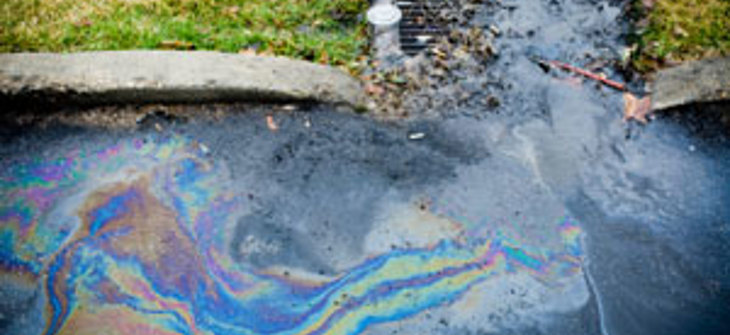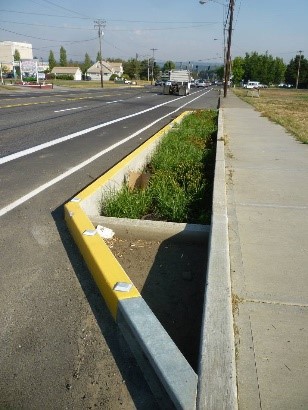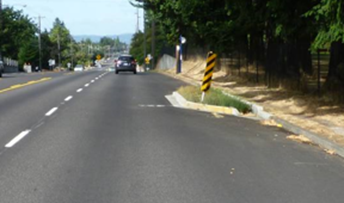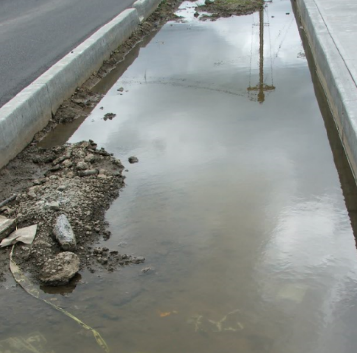
Bioretention Part Two: Lessons Being Learned - Design Considerations
Bioretention Design Considerations: Key Lessons from the Field
As a volume based stormwater control measure, bioretention systems are providing beneficial use in that they reduce runoff volumes and peak flows. In areas where combined sewers are an issue, bioretention can reduce CSO frequency while increasing evapotranspiration and helping with groundwater recharge via infiltration processes. Common design criteria include storage volume and a design infiltration rate of the media and the underlying native soils. These criteria are tied to the site characteristics and statistical hydrology, for example, design the storage volume such that 95% of the mean annual runoff volume is retained. In addition to these sizing criteria, we also need to design with these other factors in mind.
Pollutant Loads As discussed in Part One, these facilities can be subjected to substantial pollutant loads. An important design consideration is the “assimilative capacity” of the system including the media and associated vegetation. For example, a bioretention facility may be able to handle some load of petroleum hydrocarbons via sorption, biological decomposition, and photo degradation. However, at heavy concentrations the system is overloaded and fails. So a critical part of the design is understanding potential pollutant loads and accommodating them with proper design such as sedimentation bays (pictured), etc. Obviously land use is key to anticipating pollutant loads. The notion of “one size fits all” in the design process will result in poorly functioning, high maintenance, or failed facilities.
As discussed in Part One, these facilities can be subjected to substantial pollutant loads. An important design consideration is the “assimilative capacity” of the system including the media and associated vegetation. For example, a bioretention facility may be able to handle some load of petroleum hydrocarbons via sorption, biological decomposition, and photo degradation. However, at heavy concentrations the system is overloaded and fails. So a critical part of the design is understanding potential pollutant loads and accommodating them with proper design such as sedimentation bays (pictured), etc. Obviously land use is key to anticipating pollutant loads. The notion of “one size fits all” in the design process will result in poorly functioning, high maintenance, or failed facilities.
Sizing
Sizing relates to matching the performance of the facility to the site hydrology, and to the hydraulic characteristics of the facility, including above media storage volume, media infiltration rate, subsurface storage volume (if any), and underlying soils infiltration rate and/or effluent pipe.
Most bioretention facilities are volume based and store the water quality volume above the media surface. If one chooses to reduce that volume by defining the volume as the pore volume in the media plus stored above the media, then the infiltration rate of the media is important as one would need to start routing the runoff hydrograph to avoid rapid filling and overflow. This becomes more important as the media flow rate increases. For example, newer technology emerging in the U.S. have media flow rates in excess of 300 cm/hr. Thus, the volume above the media is small, and volume control is achieved by subsurface infiltration of filtered water. So the most important element of the design is determining the peak flow rate associated with the volumetric design storms to insure the facility can accommodate periodic high flows.
Siting Issues Sometimes we get so focused on the landscape amenity aspects of a design we failed to look at how the facility is situated. For example, in constrained areas the facilities are being constructed in public right of way and termed “bump outs”. In this example, the bump out has become a traffic hazard, especially to cyclists who can be forced into traffic. Other siting issues include
Sometimes we get so focused on the landscape amenity aspects of a design we failed to look at how the facility is situated. For example, in constrained areas the facilities are being constructed in public right of way and termed “bump outs”. In this example, the bump out has become a traffic hazard, especially to cyclists who can be forced into traffic. Other siting issues include

proximity to basements, impermeable soils, trip and fall hazards and traffic sighting. The example shows standing water in the underlying “ native soils” long after a storm. There is a long list of siting considerations for bioretention design; so it is important to go through a check list to insure all of these design aspects are being considered.
